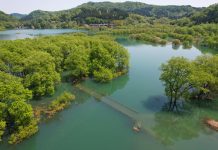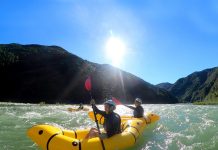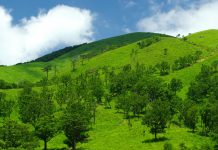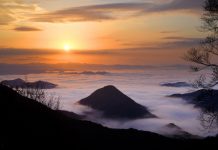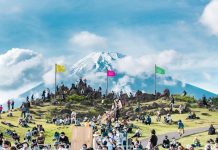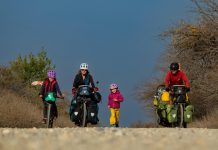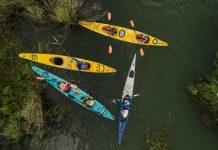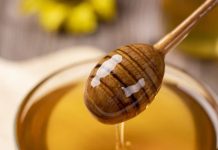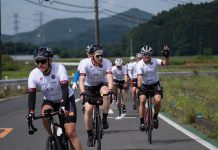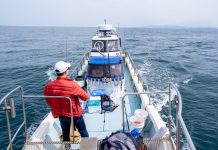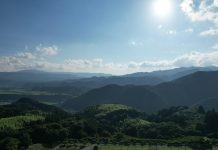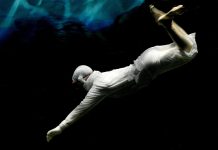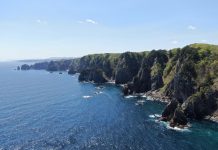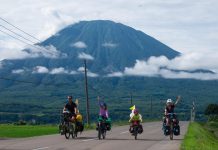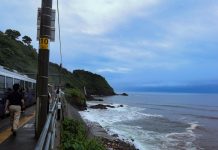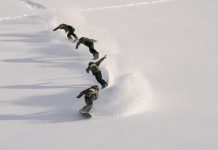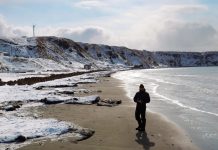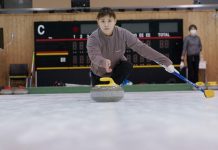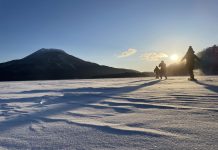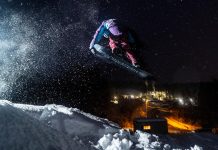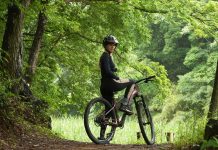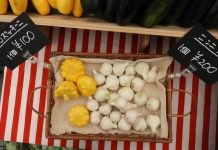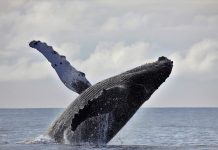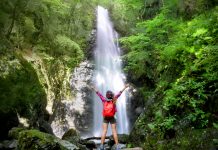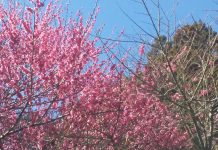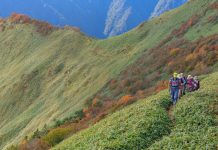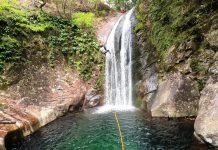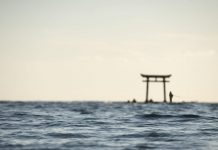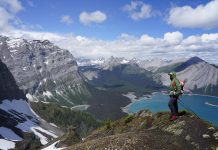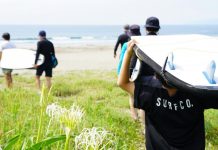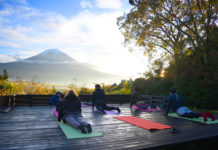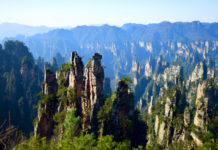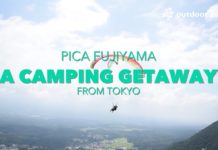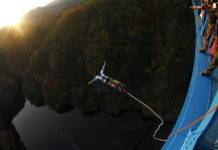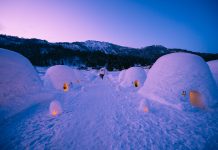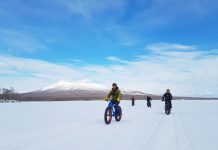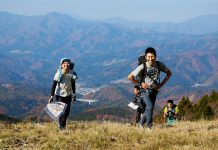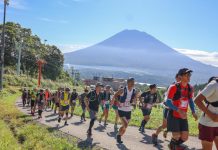For those of us growing up in Portland, Oregon, Mt. Hood was our home mountain. On weekends we’d drive up Highway 26, through a tunnel of giant evergreens, passing through Zigzag and Government Camp on our way to Meadows or Timberline. Sometimes we’d head over the mountain where alpine forests would give way to high desert and big skies on our way to Mt. Bachelor.
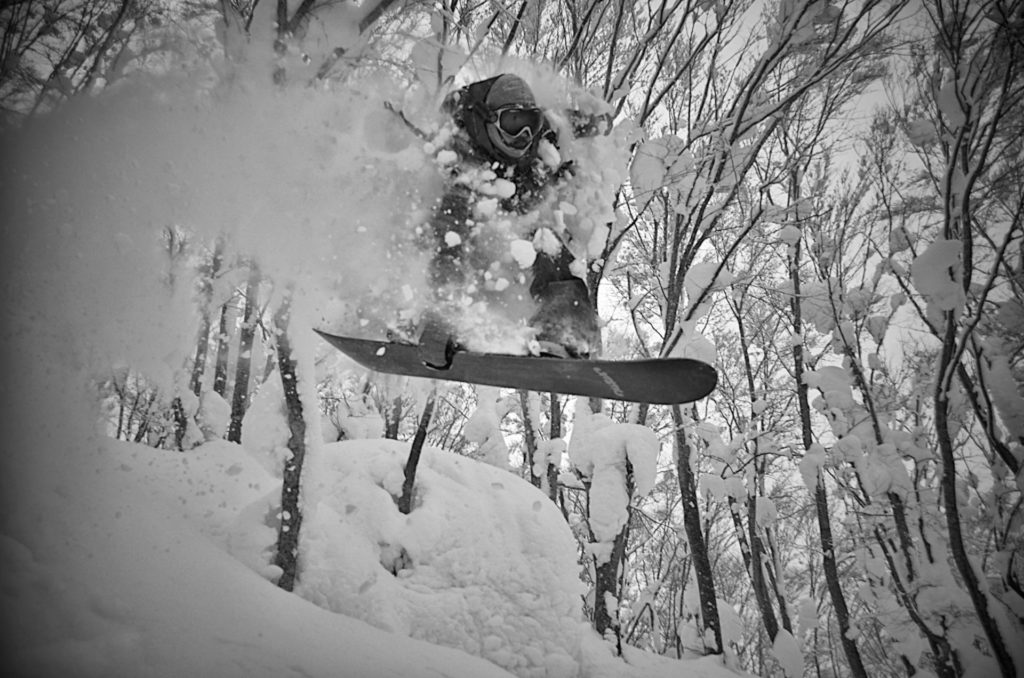
Before each the season started, there were ski swaps where you could buy or sell new and used gear, family debates about whether or not to invest in season passes and racing kids chomping at the bit after months of dry land training.
Yet an indelible sign winter was upon us happened when Warren Miller came to town with his new film. I remember a packed theater buzzing with energy and anticipation to see what he had in store for us this time.
To say times were simpler then may sound nostalgic, but it is also true. There were no smartphones, no social media or HD action cams. Warren Miller captured his athletes in action on film; his witty narrative drawing you into the stories, and that friendly, unmistakable voice making you feel as if he was talking only to you. Yet it was a community event; it was like we were all part of the club.
Warren Miller directed 55 ski films from 1950 to 2004, and it is no exaggeration to say he inspired generations of skiers and helped create a ski-film industry driving the high-profile action sports athletes we see today. A lot has changed since 1946 when he and a friend camped out in the parking lot in Sun Valley, Idaho, working as ski instructors in order to shoot on 8mm cameras in their free time.
Times have changed, but the spirit of the ski bum remains alive and well. The camera gear may have evolved dramatically, and the technology for slaying big mountains improved, but the athletes and filmmakers share the same passion to go steeper, deeper and further in order to create and capture those iconic moments.
Today, many of these filmmakers are making the journey to Japan, an intrepid winter destination no more. Many of these films feature the pillowy, bottomless powder of Hokkaido, where Neil Hartmann has been shooting for years, directing his popular “Car Danchi” series and becoming one of Japan’s best-known snow filmmakers.
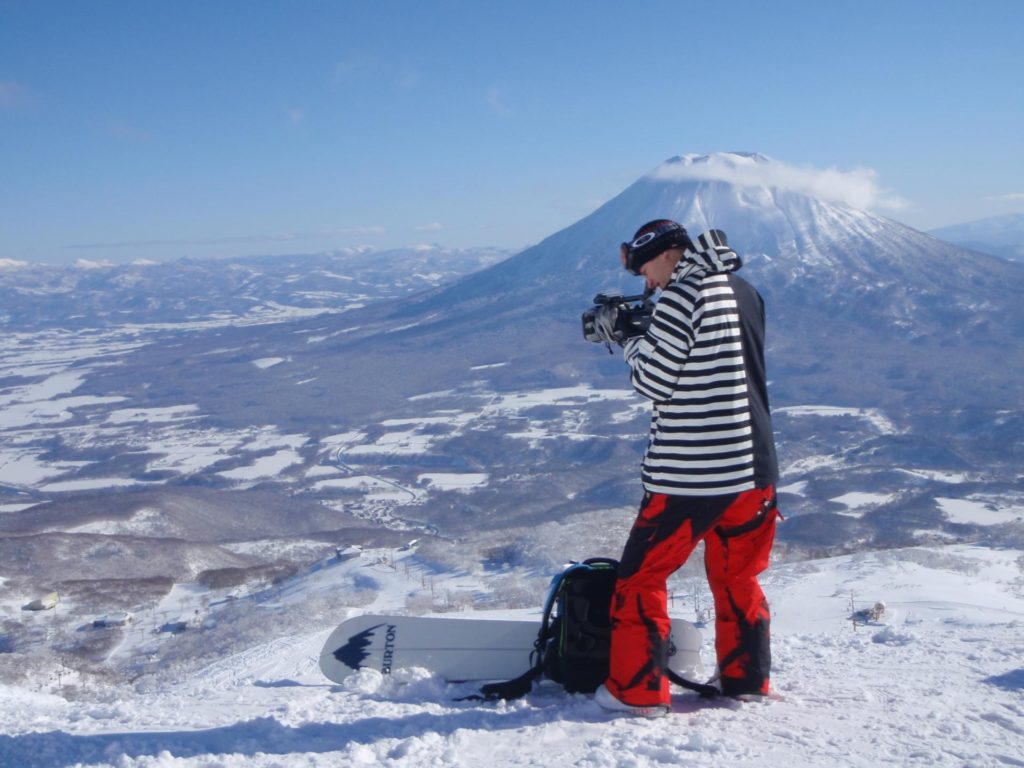
Jeremy Jones, arguably the most famous big mountain snowboarder in the world, has spent time on the North Island as well, yet it was the dramatic peaks of Hakuba that lured him back to Japan to shoot for his latest film, “Further.” I talked to both about the evolution of ski films, why Japan is a popular filming location and what makes the Japan ski experience so special.
THE SLUM LORD: AN INTERVIEW WITH NEIL HARTMANN
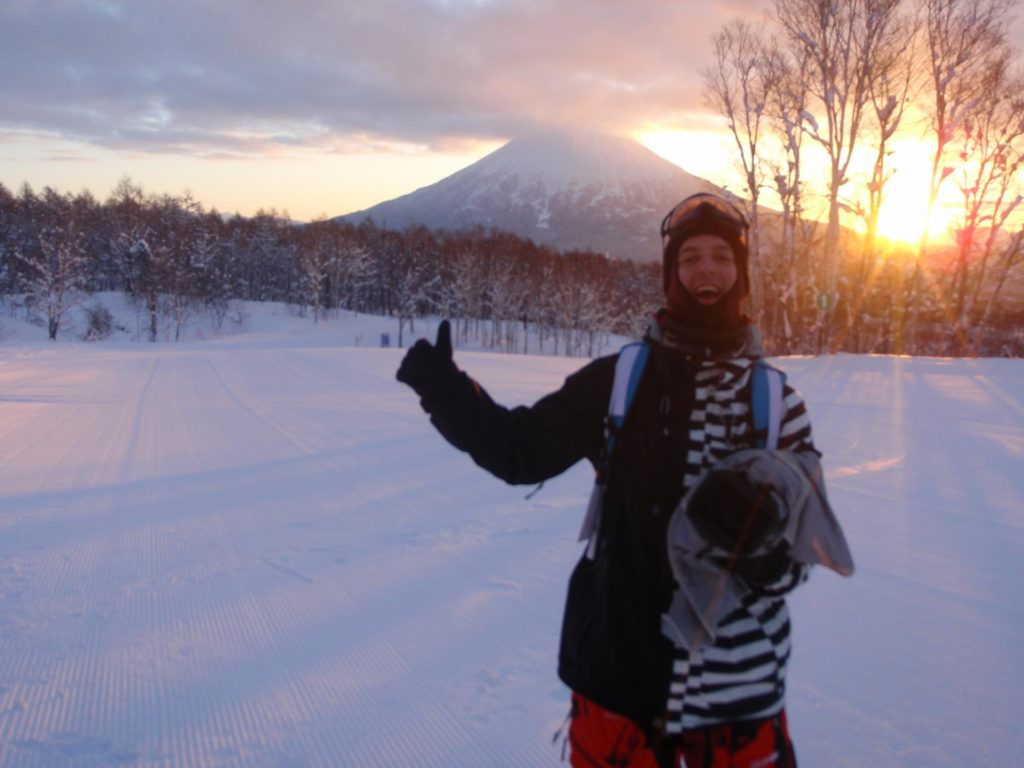
What was the first snow film you can remember being filmed in Japan?
In the mid-’80s when I started snowboarding here in Japan, contests were already being held at resorts such as Rusutsu. Some production companies came over and filmed the contests, including Fall Line Films. Their “Critical Condition” movie has a legendary scene in which Chris Roach and Mike Ranquet get kicked out of Japan.
A lot of the movies from the early ’90s had contest footage from Japan along with shots of guys such as the legendary Craig Kelly riding among Japanese birch trees in pristine powder.
A little later, a Canadian production company called Tree Top made a series called “Made in Japan.” They would come over and film foreign and Japanese riders shredding powder. I always thought those movies were cool, because they were about Japan but made from a westerner’s point of view; it was a cool mix.
Where did the inspiration for the “Car Danchi” series come from?
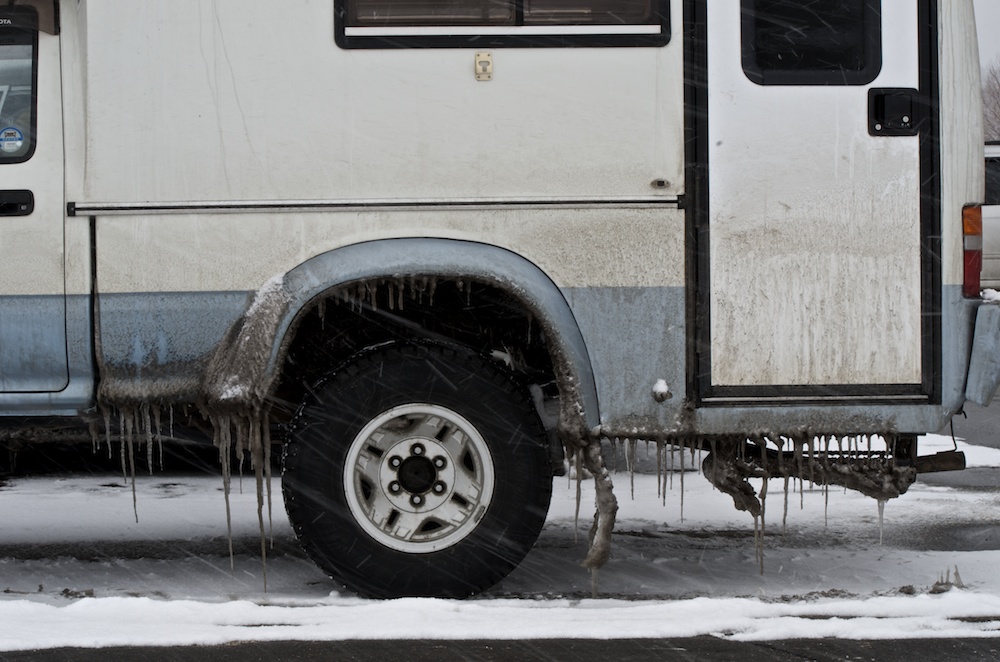
I had been focusing on shooting photos for a few years before making the first “Car Danchi” movie. The crew with which I was shooting started really moving into the backcountry and, to access the good spots, we all started sleeping in our cars as we traveled around Hokkaido. We wanted to be close to the mountains and good backcountry spots without having to spend a lot of money on hotel rooms.
The lifestyle element of what we were doing and the progressive backcountry riding I was witnessing made me want to grab my video camera and start filming. Still photos just couldn’t capture the whole package.
You also have to remember, at the time, the snowboard scene (industry and media) was focused almost entirely on snowboard park riding, street rails and contests. The backcountry powder riding we were doing was not popular at the time. It was hard for me to sell photos of what we were doing, so video was a way to showcase the lifestyle and riding.
What does “Car Danchi” mean?
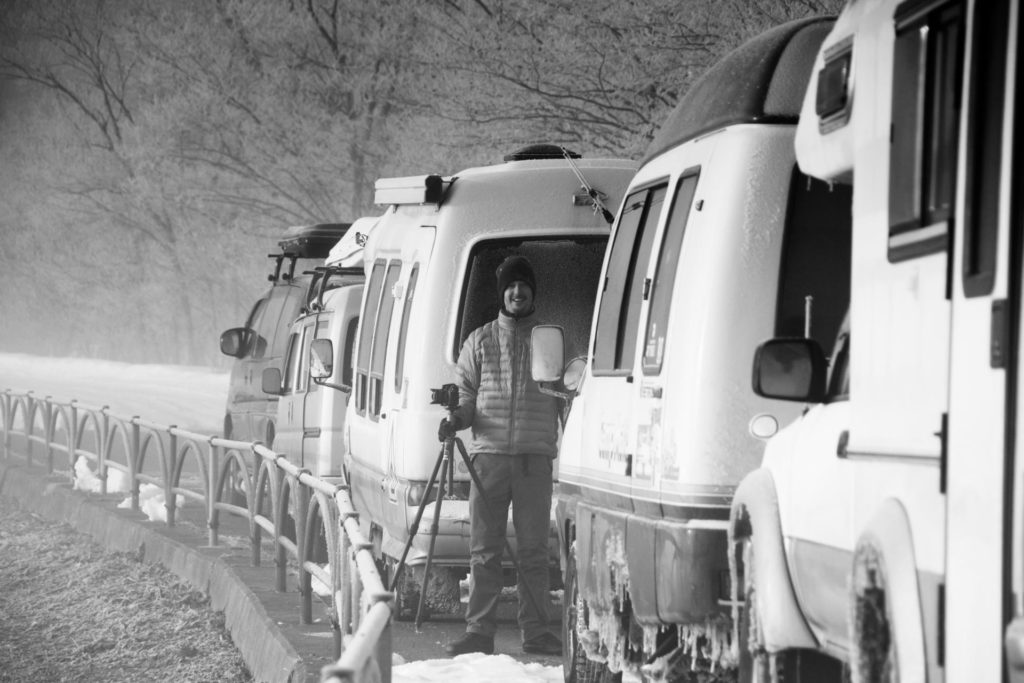
The name itself was uttered by one of our crew (Kazushi Yamauchi) as we all stood in the parking lot at night looking at our lineup of cars. A bunch of vans and campers all parked in a line with the interior lights on resembled a small apartment building. He literally just said, “Car Danchi” and we all laughed.
The word “danchi” translates to “apartments,” but not the posh penthouse variety; rather the government or company subsidized type, and has a lower class connotation. It stuck in my head and, when I was ready to choose a name for the first video, right away I knew it had to be “Car Danchi.”
Were there any particular films that inspired you?
I used to love Warren Miller. I had a video of his called “Steep and Deep,” and I watched that thing so many times. I loved the humor in his narrations, the variety of footage, so many different locations and the way he would always tie it all together. I am still trying to emulate his style in many ways today.
There also was an amazing film called “The Walrus Dreams” by Ari Marcopolus. It was a huge inspiration until my VCR ate the tape. All the early TGR films and Standard Films TB Series up to No. 8 were my favorites to study as well.
What were you shooting with when you first started?
Well, I got into filmmaking right when everyone made the switch from film to video. All the big production companies were still using 16mm film, but I did not have a budget for that, so I bought a video camera and was shooting with that from the beginning.
I always loved the look of film though, so I bought a Super 8mm camera at a second-hand shop and started shooting with that for the “Car Danchi 1” movie. In the end I think that footage really helped make the movie popular. It set it apart from other Japanese snowboard movies with the nostalgic film look and created a style people recognized and remembered. I used a lot of Super 8 in the first three movies and then graduated to a high-definition equipment set-up from number four.
I have never really been that concerned with staying on top of the latest technical advances. There is a lot of pressure out there to shoot with this new camera or use this new whatever, but I really feel people want stories and characters more than crystal clear sharp pictures. It may not help get me any camera sponsors, but that has always been my take. I like shooting with the latest full HD camera but could easily go back to the Super 8mm and make a movie as well.
Have things changed much since you started shooting?
For me personally I don’t think much has changed at all. As for the rest of the world, I think things have changed a lot from the Warren Miller days. Snowboarding has become an industry of itself, and skiing is a different animal now too. The ski and snowboard movies tend to be made for an insider (industry) audience rather than the average skier Warren was trying to please. We lost the humor along the way too; everything is very serious and hardcore and extreme now.
There is not much of a story line in snow films now, but things are starting to turn around a little. Movies such as Jeremy Jones’ “Deeper” and “Further” come with a story line, and Travis Rice is always breaking down stereotypes with his films such as “Art of Flight,” combining the best of both action and documentary styles.
How has the equipment changed since you first started filming?
The camera gear has certainly revolutionized what can be done and the angles that can be shot. Of course, strapping a camera on your head is not something new. Greg Stumps’ films such as “Blizzard of Ahhs” had classic footage of one skier strapping a 16mm camera to his head to get the point of view (POV) shots. It has become so much simpler and cheaper with today’s high-tech cameras.
Everything seems to be waterproof now as well, which makes it much easier. Since the beginning, I have been a fan of small cameras. I would forsake a little quality in order to get something small, and light that would fit into my jacket pocket so I could take it anywhere. It was my way of making sure I could always be close to the riders and get more intimate and unusual angles.
I have seen a lot of cameramen give up hiking a slope for a better angle because their camera is too big and heavy. Now everybody has a camera in their pocket, a GoPro or an iPhone, so it has become incredibly easy to get those “hard to capture” shots. In fact, it has gone so far, I think soon people will see the basic tripod filmed shot as something new and refreshing. Everything comes around right?
How much did you use action cams in “Car Danchi 6?”
For “Car Danchi 6,” I decided to take it to the extreme and see if it would be possible to film almost the entire movie using just “helmet” cams. I used both GoPro and Contour action cams. Each rider was given a camera for the season with the instructions to “get the shot” and that they did. I was able to gather sunny powder day shots from Nagano and Niigata even though I was far away in Hokkaido shooting something else. I think the movie really puts the viewer in the “driver’s seat.”
Why are more and more people coming to Japan to film?
You know, it’s funny. Back in the mid-to-late ’90s, at snowboarding’s peak of popularity here in Japan, I can remember touring around with the top pro riders of the day, and a lot of them would comment on how there was “nothing to film here,” or they would say, “It’s too flat.” Many of them would go home disappointed. Now everybody flocks here to ride the low-angle powder we have in abundance, and they can’t seem to get enough of it.
There are a lot of reasons people come to Japan to shoot, but the first and foremost has to be the quality and consistency of the snowfall. Board and ski design has changed so much in the last 10 years, people are now able to truly enjoy the super deep, light and—yes, not so steep—terrain we have here.
The other thing is being an island country with generally coastal mountains, the snow, although light and dry, amazingly sticks to everything. So it is a lot safer than a rocky place such as Colorado, where it can look like powder but there may be sharp rocks covered by a centimeter of white.
I think people have also become addicted to the food, the service, the hot springs, the sake and all that good stuff that comes with the powder in Japan. Plus, we have to give a big thank-you to the Australian Powder Corp. that has set up an English-speaking infrastructure at many of the top snow spots. Now it is easy to get picked up at the airport, check in and even order from an English menu. All you really need to know these days is ”kampai” and “arigato.”
What areas do you usually shoot for your snow films?
I am based in Sapporo, so Hokkaido is my main “go-to zone.” People tend to see Hokkaido as one region, but it’s a huge island with many different areas and weather patterns, so there is a lot from which to choose.
Niseko is a regular spot, and the Furano-Tokachi area has so many big lines and backcountry zones, it will take a lifetime to work through that. During the last few years, I have been spending quite a bit of time exploring the mountains right around my house here in Jozankei, near Sapporo. The Sapporo backcountry boasts some great terrain and quality snow; plus it is my backyard.
I try to make sure we get to at least one new area of Japan each year. “Car Danchi 1” was 100 percent Hokkaido. “CD2” was half Hokkaido and half Honshu. I really like the Tohoku area and have always tried to cover it with trips to Hakkoda (Aomori) and Tazawako (Akita), plus Nagano and Niigata are regulars. It is always tough to find a balance between going to places you know you will get good stuff and adventuring off to new areas.
How do you choose new destinations for “Car Danchi?”
The snow community is pretty tight here, and people are always talking about a new spot or location that has amazing snow or jumps or whatever. So, there are always tips and rumors on which to go. Then it is just a matter of looking at maps and checking the weather until something finally clicks. Then we all put the key in the ignition.
For “Car Danchi” shooting and exploration here in Hokkaido, I use my trusty Mapple (a popular Japanese road map) more than anything else. We are famous now for accessing roadside backcountry and that has always been thanks to my trusty Mapple. There are so many great roads that go up and over mountains or deep into mountain valleys. Some of them don’t pan out, but every now and then we hit a gold mine. So I spend a lot of time looking at my Mapple and planning trips. The key is to make sure we always head down some roads we haven’t traveled before.

